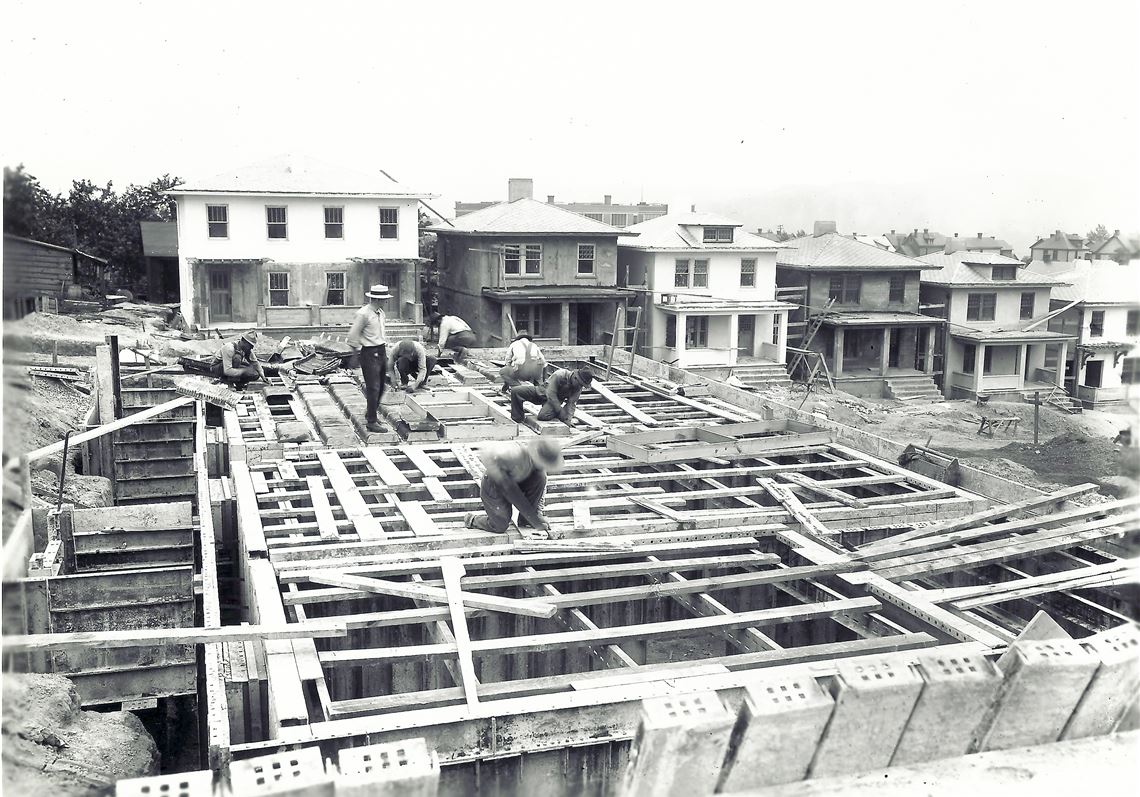The Mon Valley town of Donora is known for a number of things — the birthplace of baseball greats Stan Musial, Ken Griffey Sr. and Ken Griffey Jr. and the site of the infamous smog in 1948 that killed 20 of the town’s residents, sickened thousands and spurred efforts to control air pollution.
Often overlooked, however, is another important bit of history in the Washington County town — the construction of Cement City, which began in 1916.
The Donora site is one of about 13 such cement cities in the United States, each of which consists of dozens of poured-in-place cement houses. Thomas Edison came up with the initial design and gave the technology away to anyone who could advance the concept. The man who stepped up to the plate was Mr. Edison’s New Jersey neighbor, Franklin Lambie, who in 1911 constructed the first Cement City at Ingersol Terrace, N.J.
"Edison saw Andrew Carnegie giving away libraries at the time and said, ’If Andy’s giving away libraries, I’ll give away houses,’ " said Brian Charlton, historian, author and curator of the Donora Smog Museum.
The Donora version of Mr. Edison’s plan to provide the working man with low-cost housing proved to be the nation’s second largest, with 80 houses. A 110-house tract was constructed in Gary, Ind.
Donora’s Cement City, a National Historic District since 1994, was built for middle management of the town’s American Steel and Wire Co. One impetus for the project was the fact that steel molds used to construct the houses could be used multiple times, saving on costs.
At 1 p.m. Oct. 19, the Donora Historical Society will offer its fourth annual Cement City Home and Walking Tour. Tour takers will meet at the Donora Smog Museum, 595 McKean Ave., and go inside two or three of the cement homes, one of which is owned by Mr. Charlton.
"All of the original houses still stand, and only 3 or 4 are empty," he said. "One of the houses we’ll enter has seen little in the way of remodeling, and many of the original features remain."
Mr. Charlton will start the tour with a 45-minute slide presentation that documents the construction of Cement City from the digging of the foundations to the furnishing of the homes.
"American Steel hired Donora photographer Bruce Dreisbach to photograph the entire construction process and he took hundreds of photos," Mr. Charleton said.
The museum will display its collection of original blueprints, related newspaper articles and Cement City artifacts, such as light fixtures, cabinets and "odds and ends," he said.
The home didn’t turn out to be as low cost as initially envisioned. Cement City houses each cost around $3,800 to build at a time when a comparable wood frame home cost between $2,100 and $2,400.
But Cement City “ had a real social status for the time, which is why people rented them," Mr. Charleton said. "However, the lots are small and the houses are close together and hard to update because the walls, ceilings and floors are made of cement."
An advantage, however, was American Steel took care of all the maintenance, even down to unstopping a sink or changing a light bulb. An on-site maintenance crew occupied a cement bungalow-style building that still stands in the neighborhood.
American Steel owned Cement City until 1942 when the tract was sold to the John Galbreath Real Estate Co. From then on, people could buy and own the cement houses. Barbara and Mike Bozik moved into a Cement City house in 1966.
"We always like to say that we live in a bomb shelter," Mrs. Bozik said. "But we love it here. It’s a residential area and everyone knows one another and looks after one another. Residents add their own personal touches to give their home a unique personality— and we don’t have termites."
The slide presentation and subsequent tour is expected to take about 2½ hours. At the end of the tour, people are invited to return to the Donora Smog Museum to explore the exhibits.
Advance reservations are required because the tour is limited to 30 people. The cost is $10. For reservations: 724-823-0364. Details: www.donorahistoricalsociety.org.
Dave Zuchowski, freelance writer: suburbanliving@post-gazette.com.
First Published: October 9, 2014, 4:00 a.m.

